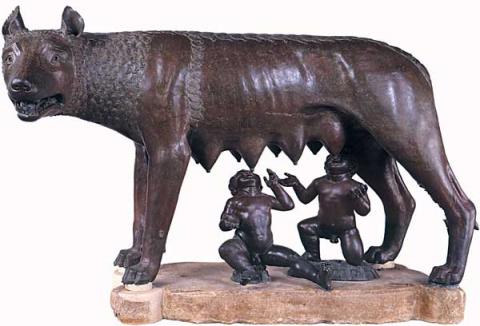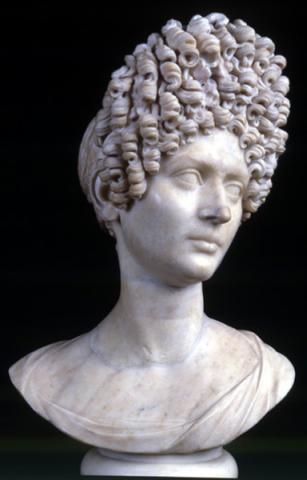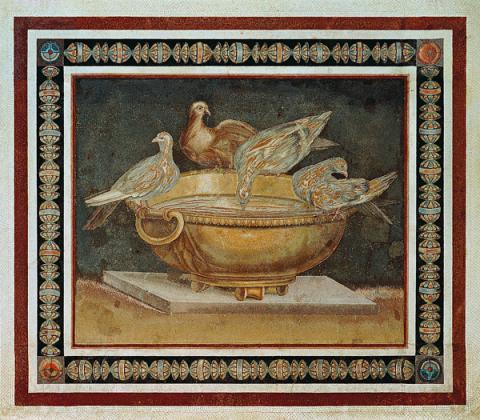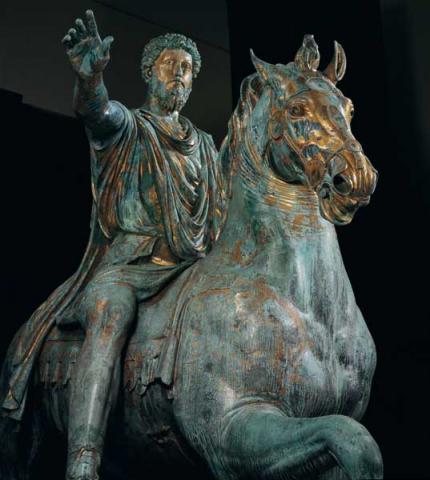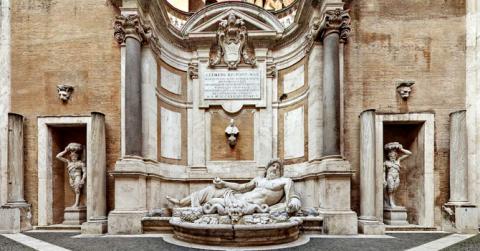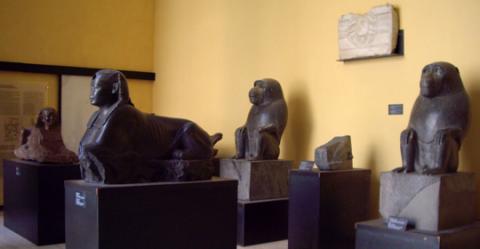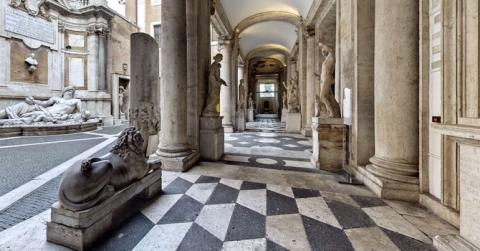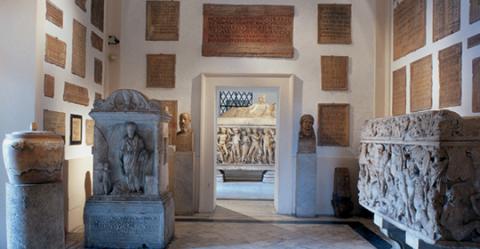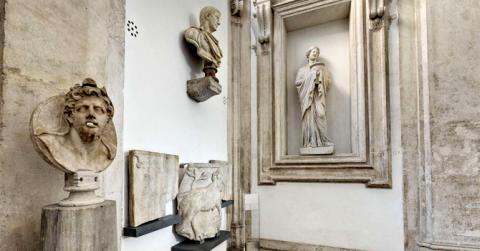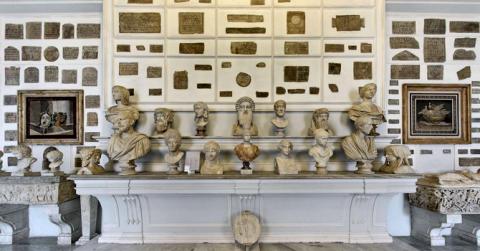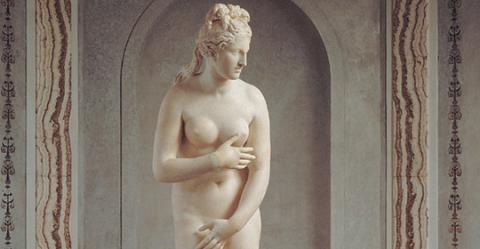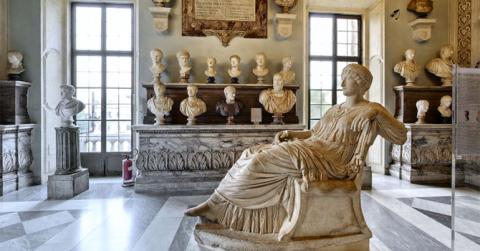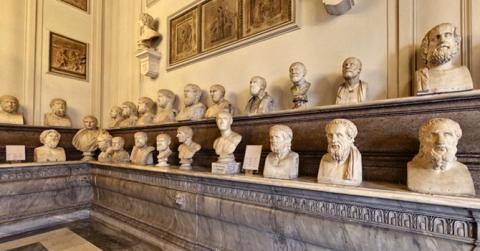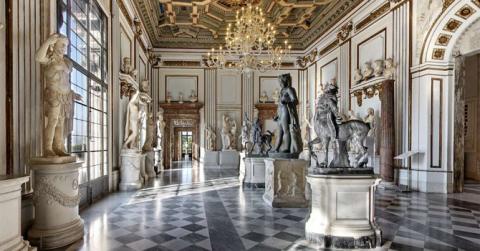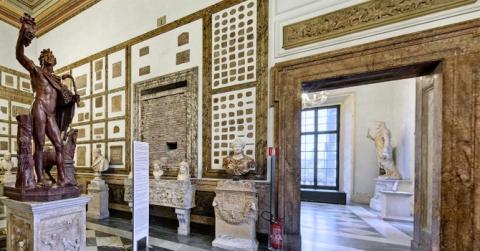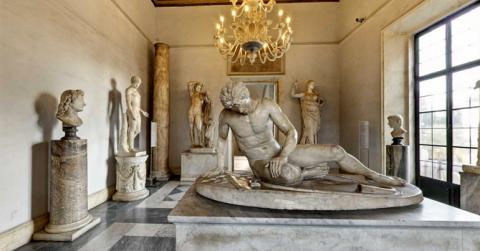Palazzo Nuovo
Despite a number of changes that have taken place over the centuries, this section of the museum has more or less maintained its original XVIII century aspect.
The decorative features of this area have remained unchanged, and this has influenced the layout of sculptures and inscriptions.
The fine pieces of ancient sculpture come mainly from private collections belonging to high-ranking churchmen and noble Roman families.
Unlike the Palazzo dei Conservatori opposite, the interior space of this building and the arrangement of its architectural features are of symmetrical design.
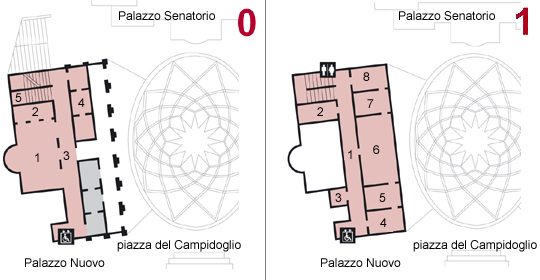

Palazzo Nuovo is so called because it was built ex novo, using Michelangelo’s blueprint when he redesigned the Palazzo dei Conservatori a century earlier to complete the renovation of the Capitoline Square.
The museum was opened to the public in 1734, under Pope Clement XII, who had already purchased the Albani collection of 418 sculptures the previous year, as an addition to the works already on display at the Vatican Belvedere and donated to the Capitoline museum by Pope Pius V in 1566, and the sculptures that could not find a place in Palazzo dei Conservatori. The collections are still arranged according to the exhibition concept of the eighteenth century.


























